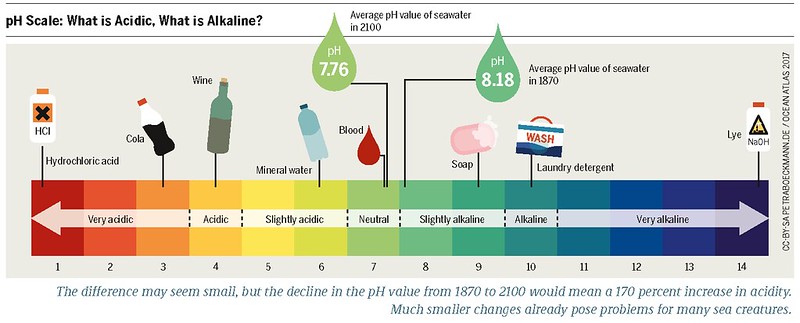Phosphorus oxide, specifically Phosphorus(III) oxide (P4O6) and Phosphorus(V) oxide (P4O10), reacts with water to form acids. The pH of these solutions is influenced by the acids formed when the oxides react with water. Phosphorus(III) oxide forms a weak acid with a pKa of 2.00, while phosphorus(V) oxide forms a weak acid with a pKa of 2.15. Solutions of these acids with concentrations around 1 mol dm-3 have a pH of about 1.
Understanding Phosphorus Oxide Reactions in Water
When phosphorus(III) oxide (P4O6) reacts with cold water, it forms a solution of the weak acid, H3PO3, also known as phosphorous acid, orthophosphorous acid, or hypophosphorous acid. The reaction can be represented as follows:
P4O6 + 6H2O → 4H3PO3
On the other hand, phosphorus(V) oxide (P4O10) reacts violently with water to give a solution containing a mixture of acids, the nature of which depends on the reaction conditions. The most commonly considered acid is phosphoric(V) acid, H3PO4 (also known as phosphoric acid or orthophosphoric acid). The reaction can be represented as:
P4O10 + 6H2O → 4H3PO4
The pH of these solutions is influenced by the strength of the acids formed. Phosphorus(III) oxide forms a weak acid with a pKa of 2.00, while phosphorus(V) oxide forms a weak acid with a pKa of 2.15. Solutions of these acids with concentrations around 1 mol dm-3 have a pH of about 1.
Handling Phosphorus Oxide in Water
When dealing with phosphorus oxide in water, it is crucial to handle it with care due to its reactivity. Phosphorus pentoxide, for instance, is corrosive and reacts violently with water. Therefore, it is essential to take safety precautions when handling these substances.
Safety Precautions
- Wear appropriate personal protective equipment (PPE), such as goggles, gloves, and a lab coat.
- Work in a well-ventilated area or under a fume hood.
- Avoid direct contact with the substances and ensure proper containment.
- Have access to emergency equipment, such as an eye wash station and a safety shower.
- Properly dispose of any waste materials according to local regulations.
Balancing the pH of Phosphorus Oxide Solutions
To balance the pH of a solution containing phosphorus oxide in water, one can add a base like sodium hydroxide (NaOH). The reaction between the acid formed by the oxide and the base will result in the formation of a salt and water, which will increase the pH of the solution.
The exact quantity of the base to be added depends on the following factors:
- Initial pH of the solution
- Concentration of the acid
- Desired pH of the solution
The general reaction can be represented as:
H3PO4 + 3NaOH → Na3PO4 + 3H2O
Example Calculation
Suppose you have a 1 mol dm-3 solution of phosphoric(V) acid (H3PO4) with a pH of 1. To increase the pH to 7, you would need to add a sufficient amount of sodium hydroxide (NaOH).
Given:
– Initial pH = 1
– Desired pH = 7
– Acid concentration = 1 mol dm-3
Step 1: Calculate the initial [H+] concentration.
[H+] = 10^-pH = 10^-1 = 1 mol dm-3
Step 2: Calculate the desired [H+] concentration at pH 7.
[H+] = 10^-pH = 10^-7 = 0.00000001 mol dm-3
Step 3: Calculate the amount of NaOH required.
Amount of NaOH = Initial [H+] – Desired [H+]
Amount of NaOH = 1 mol dm-3 – 0.00000001 mol dm-3 = 0.99999999 mol dm-3
Therefore, to increase the pH of a 1 mol dm-3 solution of phosphoric(V) acid from 1 to 7, you would need to add 0.99999999 mol dm-3 of sodium hydroxide.
It is important to note that this is a simplified example, and the actual calculations may vary depending on the specific conditions of the solution.
Conclusion
In summary, phosphorus oxide in water forms acids when reacting with it. Phosphorus(III) oxide forms a weak acid with a pKa of 2.00, and phosphorus(V) oxide forms a weak acid with a pKa of 2.15. These acids have a pH of about 1 when their concentrations are around 1 mol dm-3. Safety precautions must be taken when handling these substances due to their reactivity. To balance the pH of a solution containing phosphorus oxide in water, one can add a base like sodium hydroxide, but it is not recommended to attempt to balance the pH without proper knowledge and equipment.
References
- https://www.nagwa.com/en/videos/583193592737/
- https://www.chemguide.co.uk/inorganic/period3/oxidesh2o.html
- https://www.researchgate.net/post/What_is_solubility_of_P2O5_and_phosphate_with_respect_to_solution_pH
- https://chem.libretexts.org/Bookshelves/Inorganic_Chemistry/Supplemental_Modules_and_Websites_%28Inorganic_Chemistry%29/Descriptive_Chemistry/Elements_Organized_by_Period/Period_3_Elements/Acid-base_Behavior_of_the_Oxides
- https://chem.washington.edu/lecture-demos/ph-oxides

